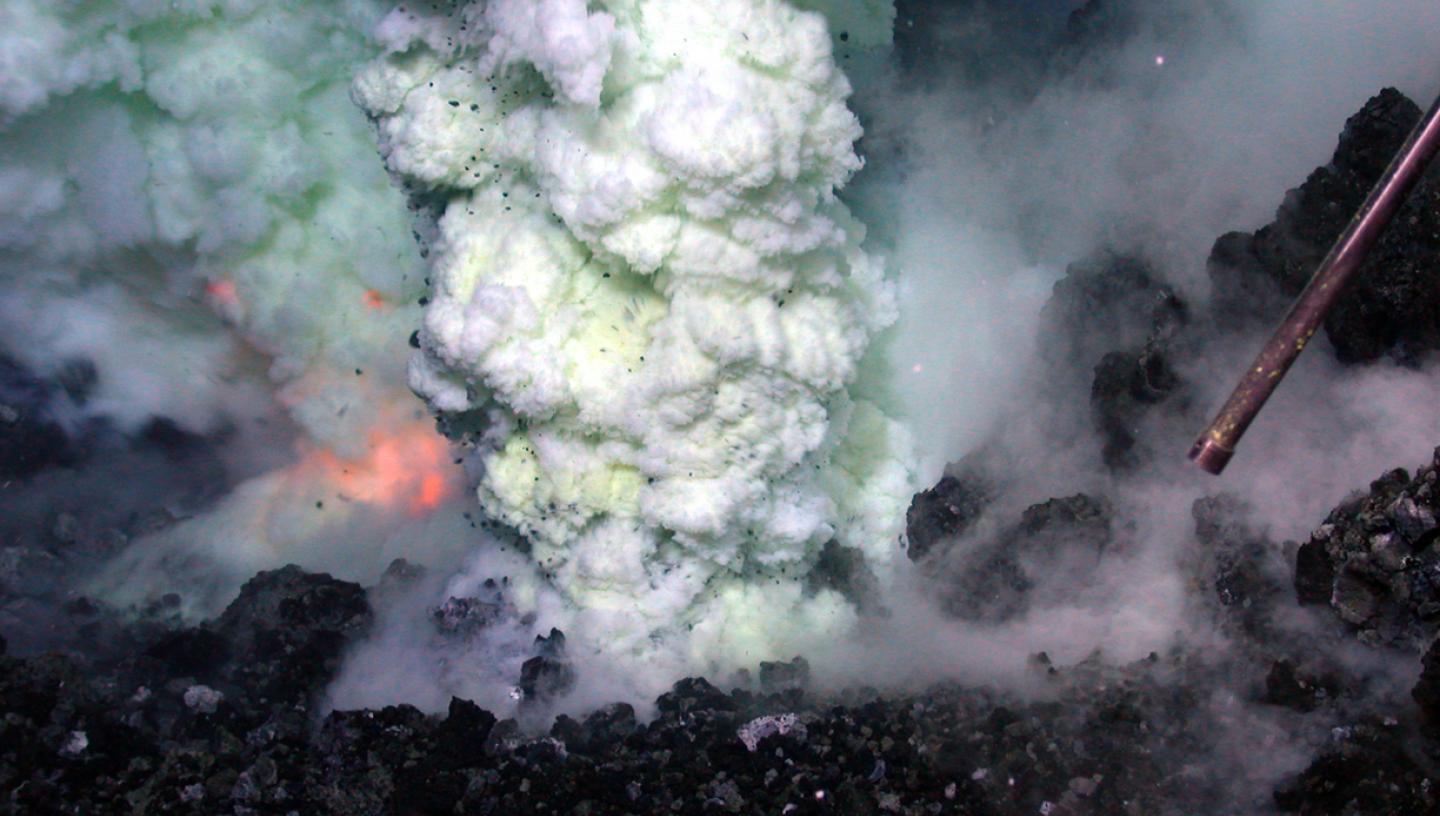
Submarine volcanoes are found deep on the ocean floor. They can erupt just as violently as volcanoes found on dry land.
Also known as seamounts (underwater mountains), submarine volcanoes can be just as violent and in some cases larger than those on land. Some oceanographers estimate that there may be as many as one million volcanoes on the Pacific Ocean floor alone – roughly 750 times the number on dry land.
Seamounts occur throughout the ocean, wherever magma rises to the sea floor and erupts. Lava or magma that has erupted and hardened then forms new sea-floor material. The mid-ocean ridge volcanoes pour out considerably more lava than the rest of the Earth’s volcanoes put together.
A seamount that grows enough to break the surface of the ocean is called a volcanic island. The Hawaiian Islands are a prime example of such a phenomenon – in fact, just south-east of Hawaii a young seamount called Loihi has grown to 3300 feet (1000m) and it is estimated that it will reach the surface in approximately 50,000 years.
Hydrothermal vents
The formation of new oceanic crust is not the only feature that seamounts produce. Where magma near the seafloor, or erupted lava, mixes with seawater, hot springs called 'hydrothermal vents’ are formed. Although these features are now know to be central to ocean processes, they were only discovered in 1979. Since then, over 200 seafloor vent sites have been found.
Scientists have now discovered that these plumes are of huge importance to the composition of the oceans. These hot springs support a unique ecosystem of micro-organisms and animals that do not need sunlight to survive: some 500 new species have been discovered. And, because the DNA of organisms living around these plumes is very primitive, some scientists have suggested that such features may shed light on the origins of life on Earth – so underwater volcanoes and vents provide a 'hotbed’ of research in every sense of the word!